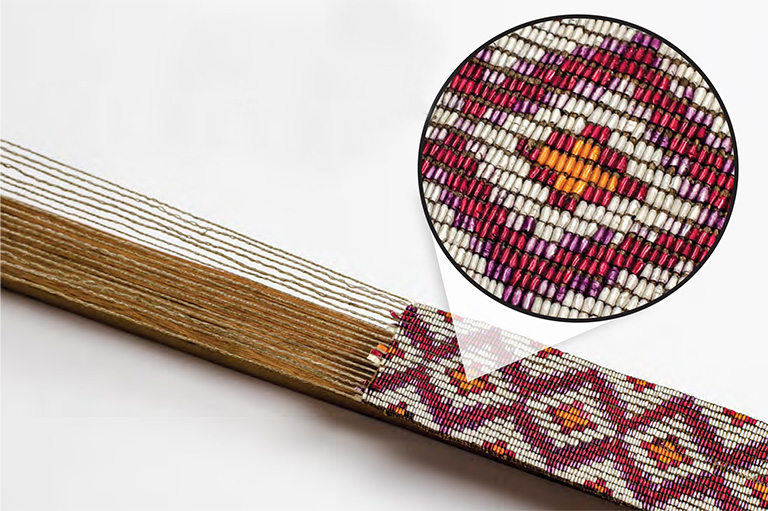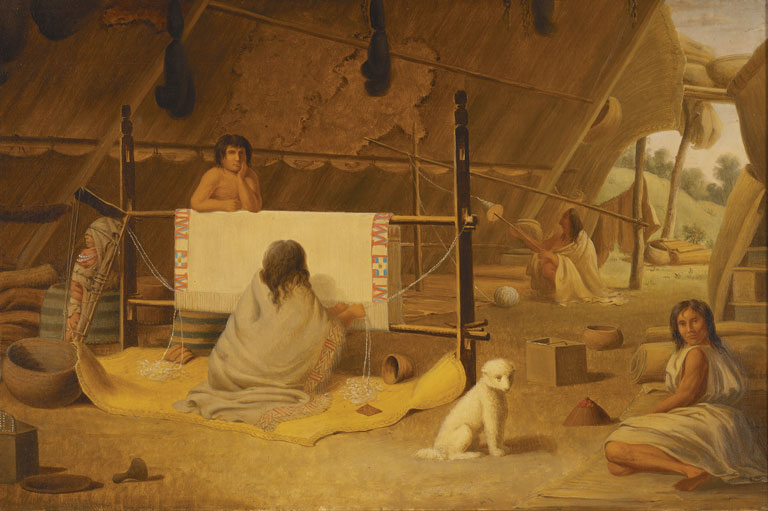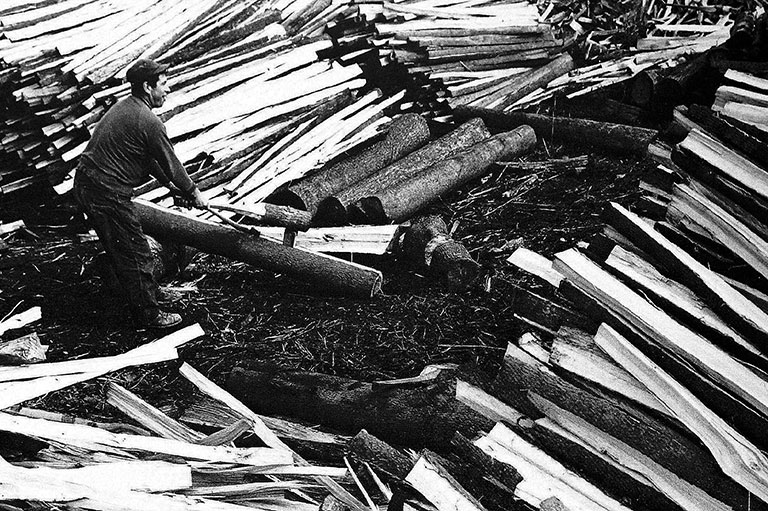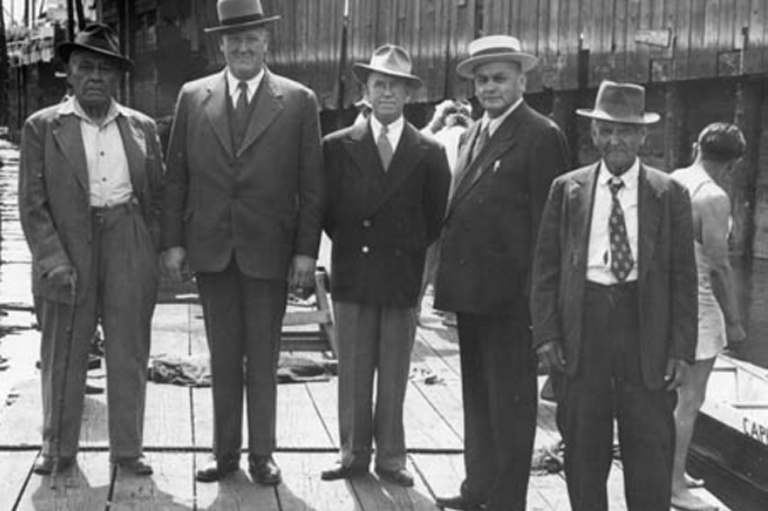Bow Loom

The bow loom can be used to produce a variety of woven materials and is a technology that has been used by many cultures.
This late-nineteenth-century Dene loom from the Northwest Territories shows a partly completed band of woven quillwork that uses natural and dyed porcupine quills. It includes eighteen strand warps made from sinew plus an end piece and a spreader, or row-divider, made from birchbark.
Porcupine quills are carefully cleaned and dyed before weaving. Natural dyes from plants were used before the introduction of commercial aniline dyes in the late-nineteenth century. Once the quills are prepared they need to be flattened and moistened to make them pliable for weaving — women would often use their mouths to do the job!
When the weaving is complete, the sharp ends of the quills are trimmed, and the finished band is ready to be sewn on to articles of clothing or other accessories. Quillwork declined in the mid-nineteenth century with increasing access to glass beads, but the artistic tradition continues today.
Themes associated with this article
Advertisement




